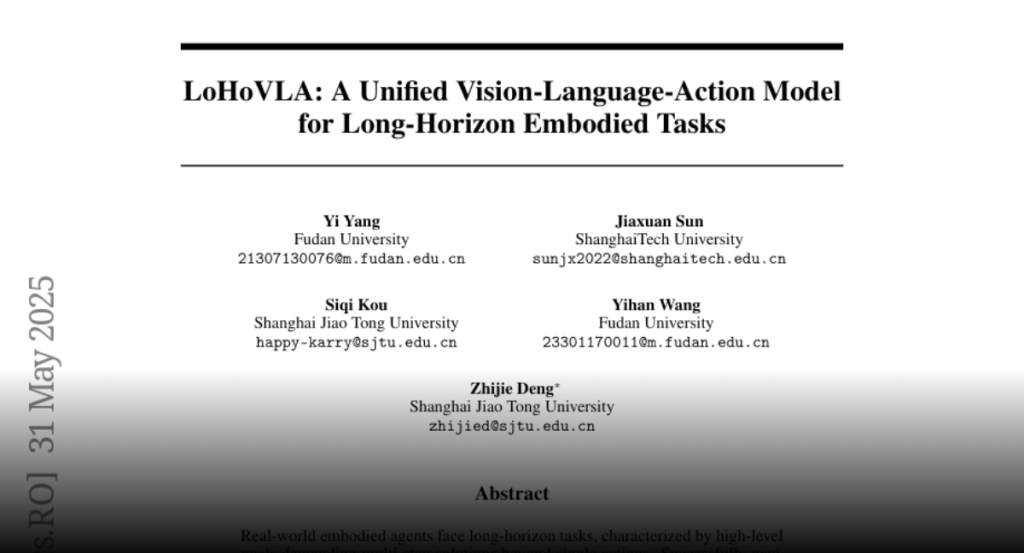A unified vision language action framework, LoHoVLA, combines a large pretrained vision language model with hierarchical closed-loop control to improve performance on long-horizon embodied tasks.
Real-world embodied agents face long-horizon tasks, characterized by
high-level goals demanding multi-step solutions beyond single actions.
Successfully navigating these requires both high-level task planning (i.e.,
decomposing goals into sub-tasks) and low-level motion control (i.e.,
generating precise robot actions). While existing vision language action (VLA)
models and hierarchical architectures offer potential in embodied tasks, the
former often falter in planning, and the latter can suffer from coordination
issues, both hampering performance. We introduce a new unified VLA framework
for long-horizon tasks, dubbed LoHoVLA, to overcome these limitations. LoHoVLA
leverages a large pretrained vision language model (VLM) as the backbone to
jointly generate language and action tokens for sub-task generation and robot
action prediction, respectively. This shared representation promotes better
generalization across tasks. Additionally, LoHoVLA embraces a hierarchical
closed-loop control mechanism to mitigate errors originating from both
high-level planning and low-level control. To train LoHoVLA, we introduce
LoHoSet, a dataset built on the Ravens simulator, containing 20 long-horizon
tasks, each with 1,000 expert demonstrations composed of visual observations,
linguistic goals, sub-tasks, and robot actions. Experimental results show that
LoHoVLA significantly surpasses both hierarchical and standard VLA approaches
on long-horizon embodied tasks in the Ravens simulator. These findings
underscore the promise of unified architectures for advancing generalizable
embodied intelligence.

